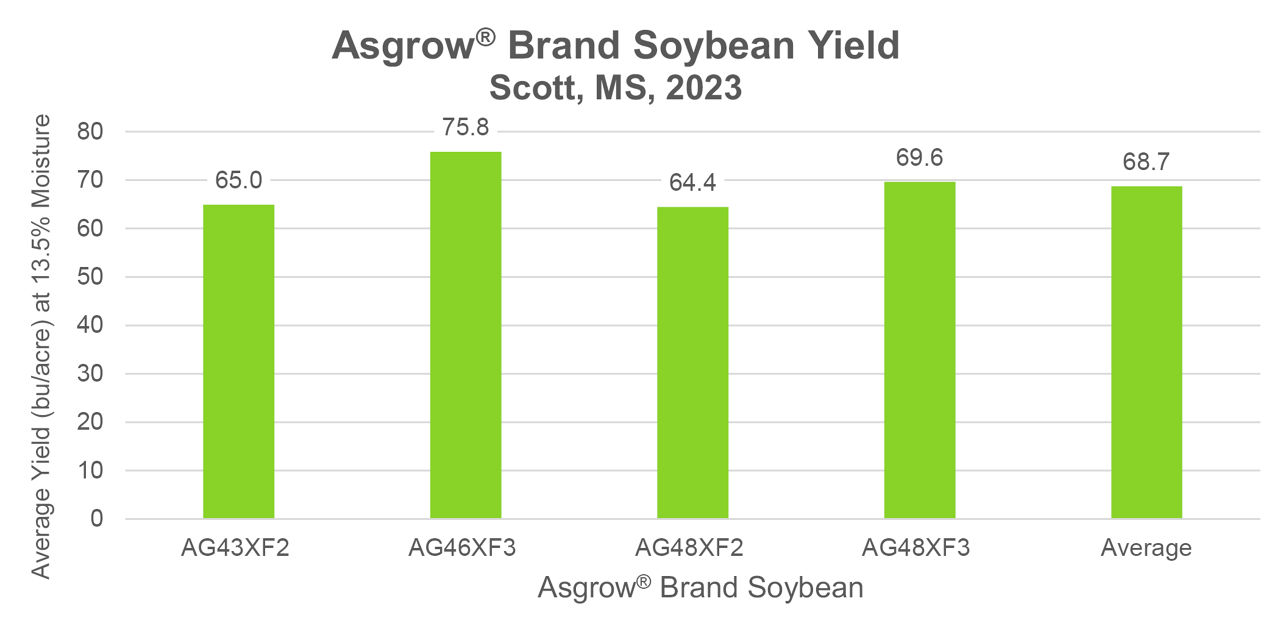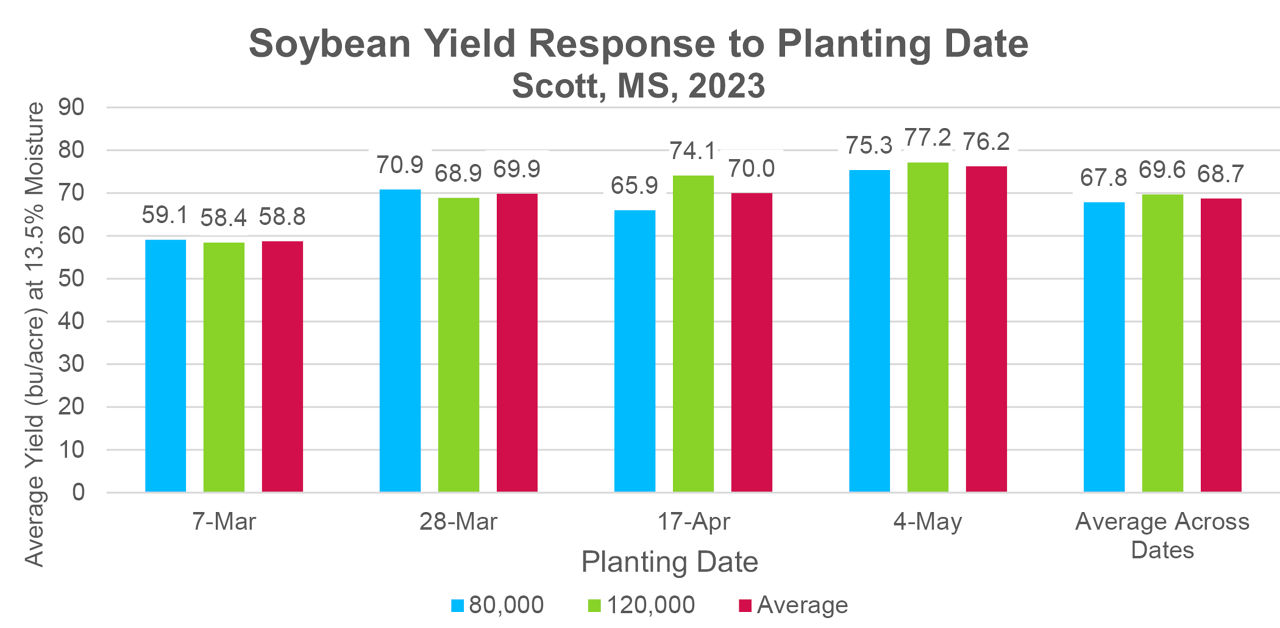20 MIN READ
Planting Date for Asgrow® Brand Soybean Products in Southern States
February 8, 2024
To compare yearly research data, click on a tab.
TRIAL OBJECTIVE
- Soybean products are planted across diverse cropping systems in the Mid-South.
- This diversity leads to soybeans being planted across many dates, with various types of planting equipment. This variation results in different emergence patterns, final stand variabilities, and various reports of crop progress and condition.
- Every season, growers want to know if they should increase or decrease populations based on variety, planting date, or other factors.
- For these reasons, the Scott Learning Center designed demonstrative plots to evaluate planting date, variety, and seeding rate effects on soybean yield.
RESEARCH SITE DETAILS

Table 1. Soybean products planted.

- All field work, tillage, and herbicides were conducted per local standards.
- Planting Dates
- March 7, 2023 – Ultra early, probably the first soybean planted in the Mid-South in 2023.
- March 28, 2023 – Somewhat early for our latitude.
- April 17, 2023 – Normally our highest yielding date.
- May 4, 2023 – The numerically highest yielding date for 2023.
- Seeding Rates
- 80,000 seeds/acre
- 120,000 seeds/acre
- Experimental Design
- A single-replication strip plot with
- Plot size approximately 0.1 acre (8 rows 150 feet long)
- Twin rows were 7.5 inches apart and seed beds were 38 inches apart
- Planted with a Monosem designed planter
- Desiccants of appropriate chemistry were applied according to label instructions as crops matured.
- Plots were harvested with a commercial combine, and grain yield values adjusted to 13.5% moisture content for data presentation.
- 2023 was a season that started out cool and dry, transitioned to cool and wet, then finally became warm and wet. This extended cool and/or wet period during the planting and emergence time affected the yield potentials of many soybean products. Therefore, many later-planted soybean crops had greater yields both at the Scott Learning Center and in commercial production fields.
- Planting Dates
UNDERSTANDING THE RESULTS

- General Yield
- Across all planting dates, populations, and varieties the trial average was 68.7 bu/acre at 13.5% moisture content.
- Varietal Yields
- The varietal yield range was from 64.4 to 75.8 bu/acre. The AG46XF3 brand demonstrated the highest average yield across the 4 planting dates. All tested varieties showed competitive performance across the study.

- Population Yield Response
- Little response to either an increase or decrease in planting population were measured across the study. Little to no interaction appeared to be present with planting date.

- Planting Date Yield Response
- Across varieties the May 4th planting date had the highest average yield at 76.2 bu/acre, while the early March 7th date only yielded 58.8 bu/acre on average across these four varieties. This would be a $244.86/acre ($14.00/bu on November 16, 2023) penalty for the premature planting scenario.
- Generally, delayed planting led to increased yields across these soybean products.
- Three of the four products had yield penalties from the earliest planting date. The later-maturing soybean product maintained yields, consistent with previous results.
- The earliest maturity product (AG43XF2, maturity 4.3) had the greatest yield gap between the earliest planting date (48.4 bu/acre average) and the latest planting date (78.3 bu/acre average).
- One variety with 4.8 maturity (AG48XF3) had an average yield of 4.2 bu/acre less on the earliest planting date than on the latest planting date.
KEY LEARNINGS
- As demonstrated previously, later-maturing soybean products (4.5 maturity) are often more resilient to non-ideal (cool, wet, and short photoperiod) planting conditions.
- Most soybean varieties have a favorable yield response to later planting dates, possibly due to improving emergence and growth conditions.
- These data do not support increasing planting rates. The current practice of 110,000 to 140,000 seeds/acre appears to be adequate for southern soybean yield goals.
- Yield response is specific to varieties and growers should make planting date decisions based on previous experience, weather forecasts, and in consultation with a local Asgrow® brand representative.
- Later (4.5 to 5.0) maturity varieties are recommended to plant first while conditions are not ideal. Early- to mid- (3.8 to 4.4) maturity varieties can be transitioned to as growing conditions become more favorable.
1314_155546
Seed Brands & Traits
Crop Protection
Disclaimer
Always read and follow pesticide label directions, insect resistance management requirements (where applicable), and grain marketing and all other stewardship practices.
©2024 Bayer Group. All rights reserved.